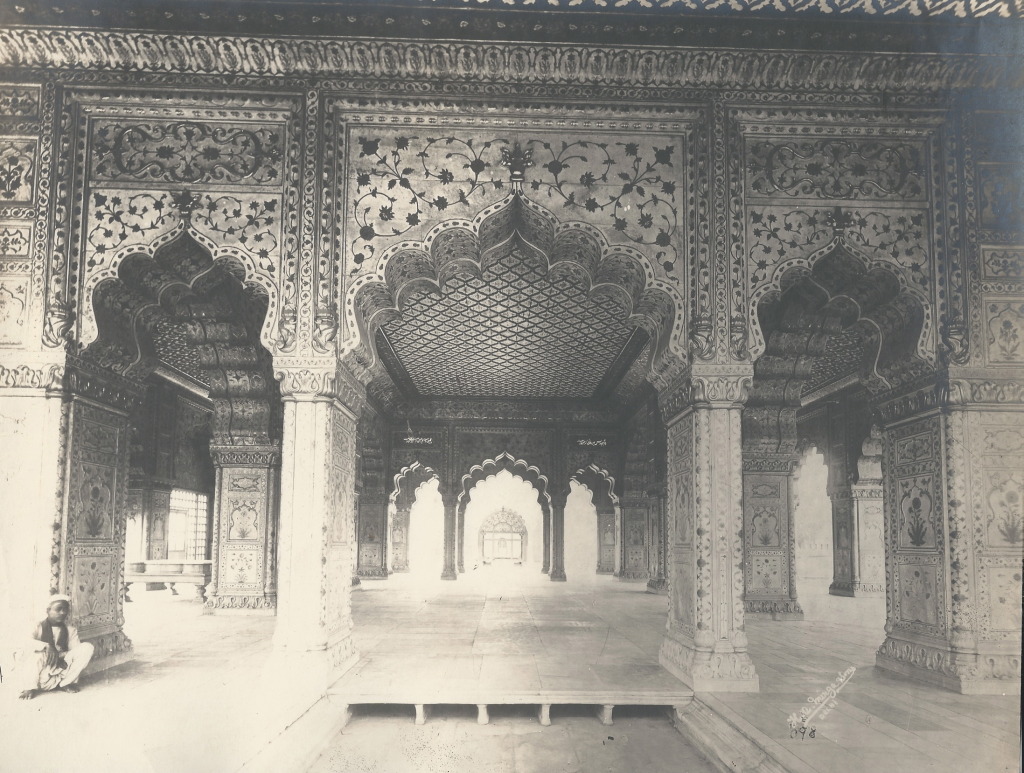

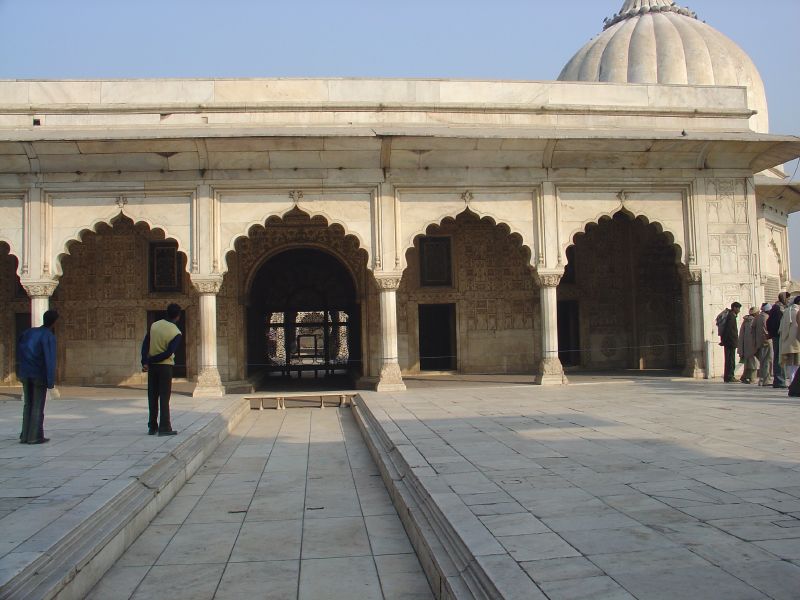
The Khvab-gah, in the Khas Mahal, from the outside
Source: http://www.flickr.com/photos/xshane/80910290/
(downloaded Sept. 2006)
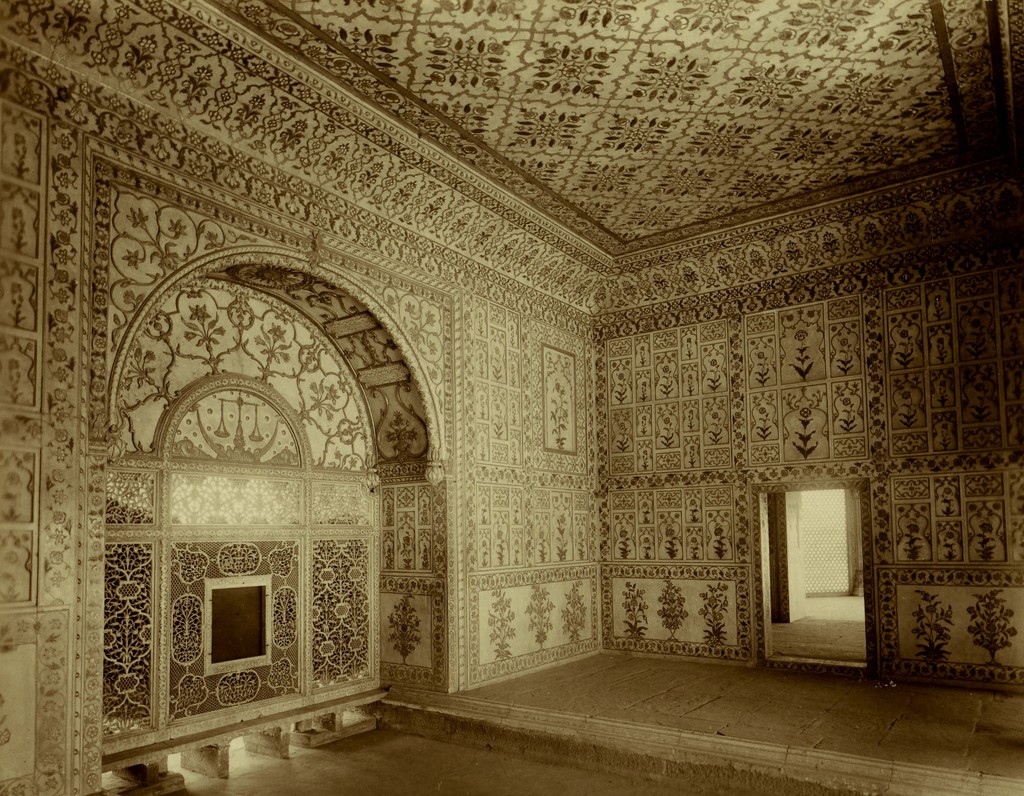
An albumen print, c.1870
Source: ebay, May 2008
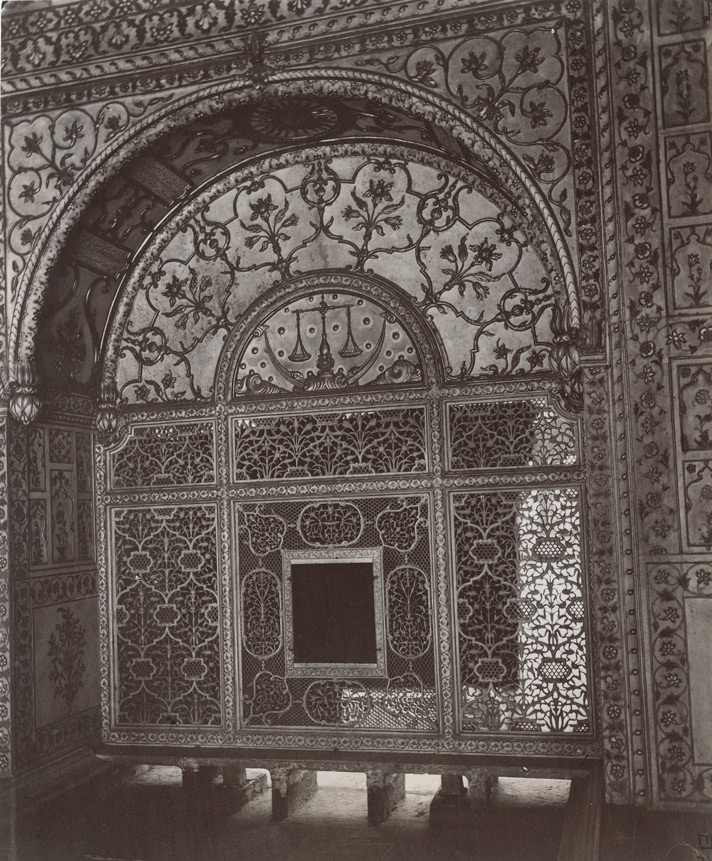
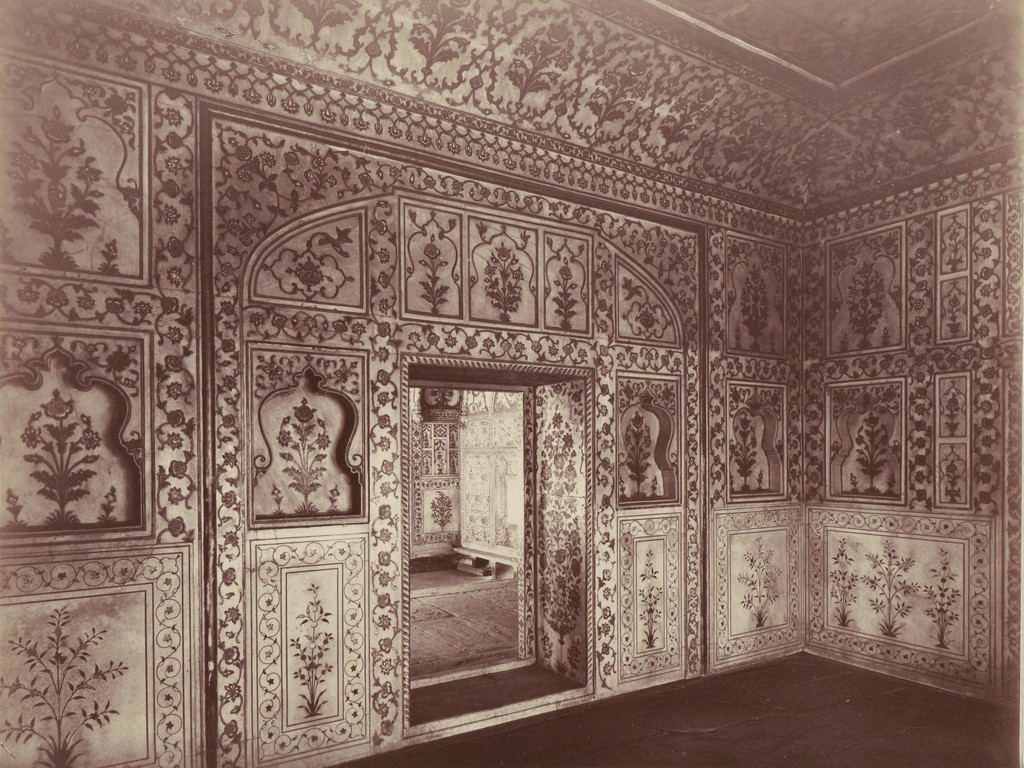
*Screen in Palace [Khas Mahal], Fort, Delhi; a photo from 1885* (BL) [*photo 1885*]
Source: ebay, Nov. 2007
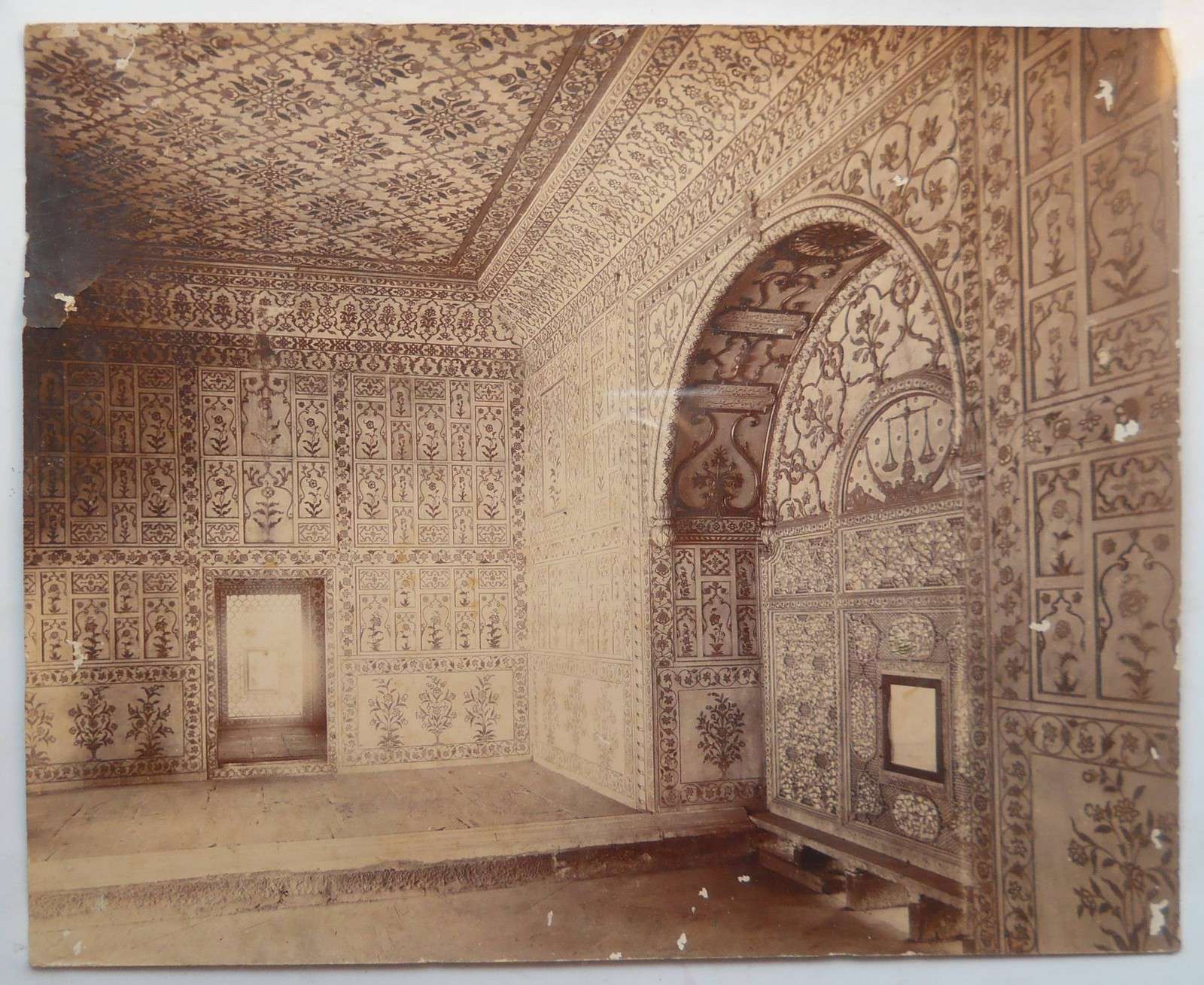
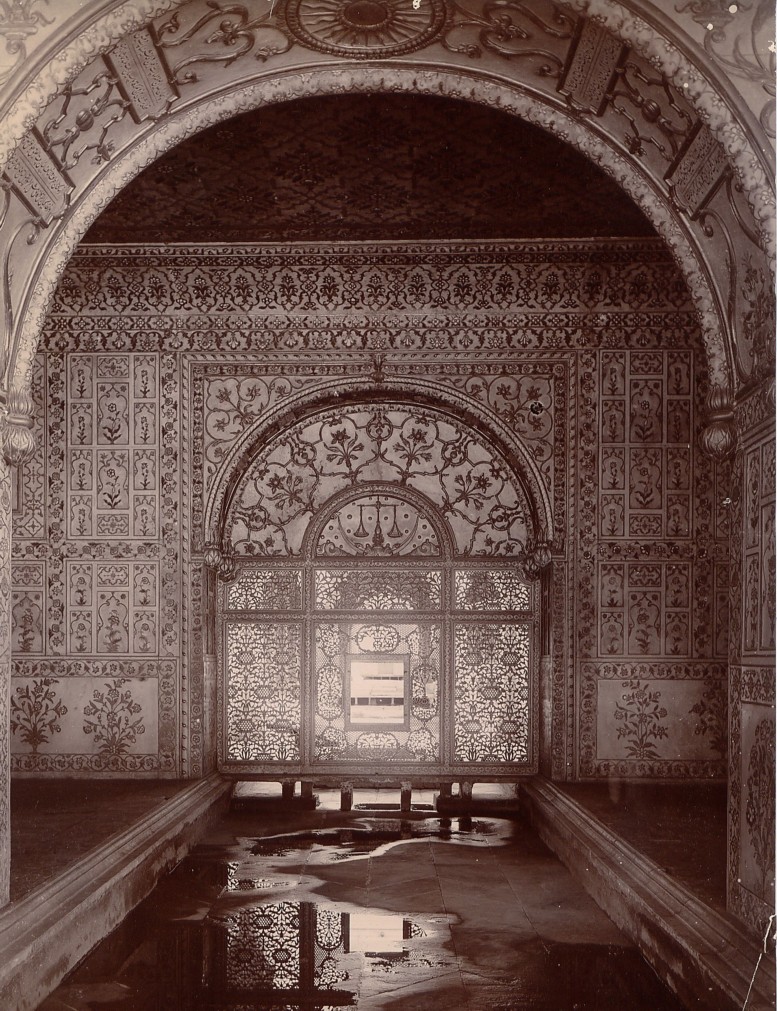
The "screen of justice" in the Khvabgah, in a photo from around the 1920's
Source:
http://www.indiamike.com/photopost/showphoto.php/photo/10567/ppuser/9096
(downloaded Mar. 2006)
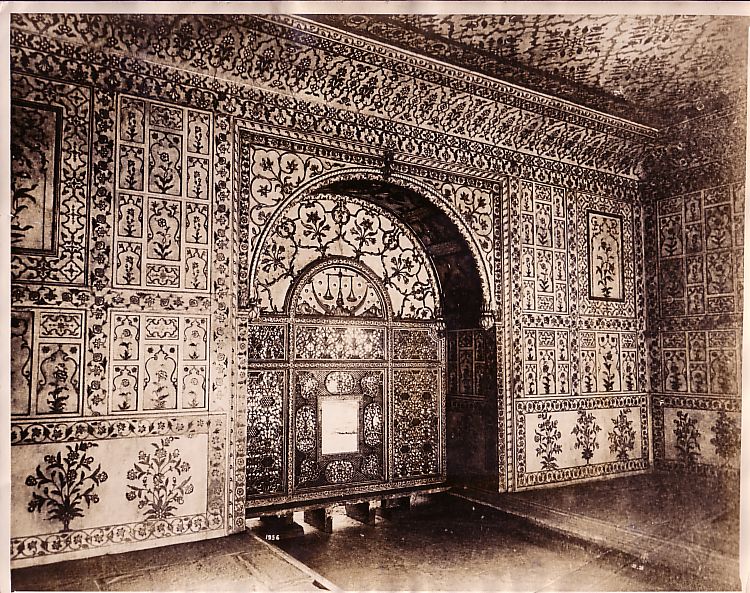
A different angle, in another view from the 1920's
Source: ebay, July 2007
Source: ebay, Nov. 2008
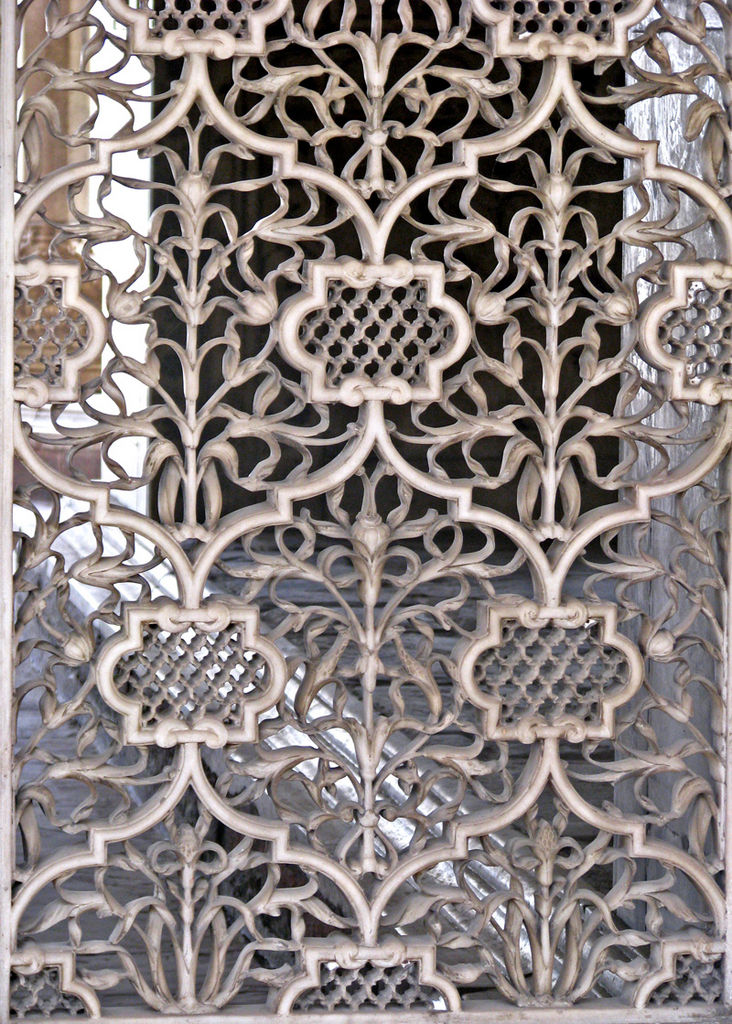
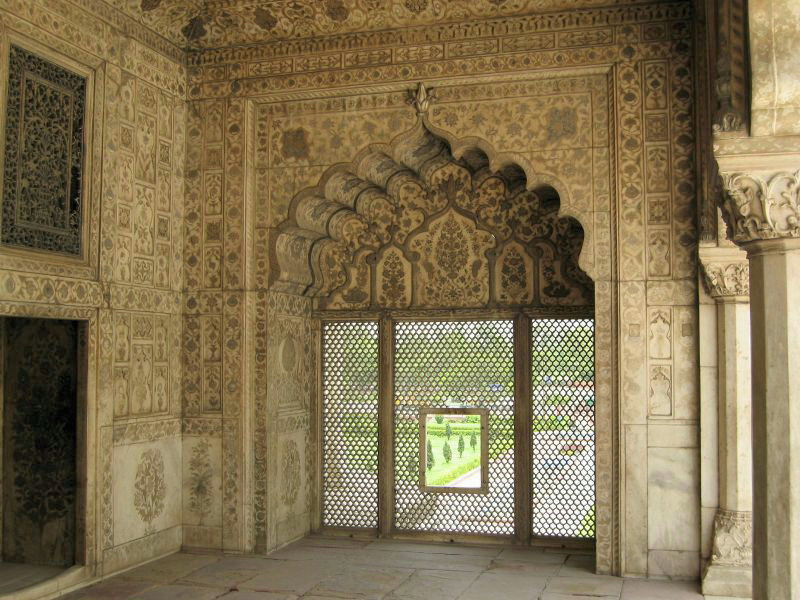
The elaborate decoration of another grilled window screen in the Khas Mahal
Source:
http://www.indiamike.com/photopost/showphoto.php/photo/11822
(downloaded Aug. 2006)
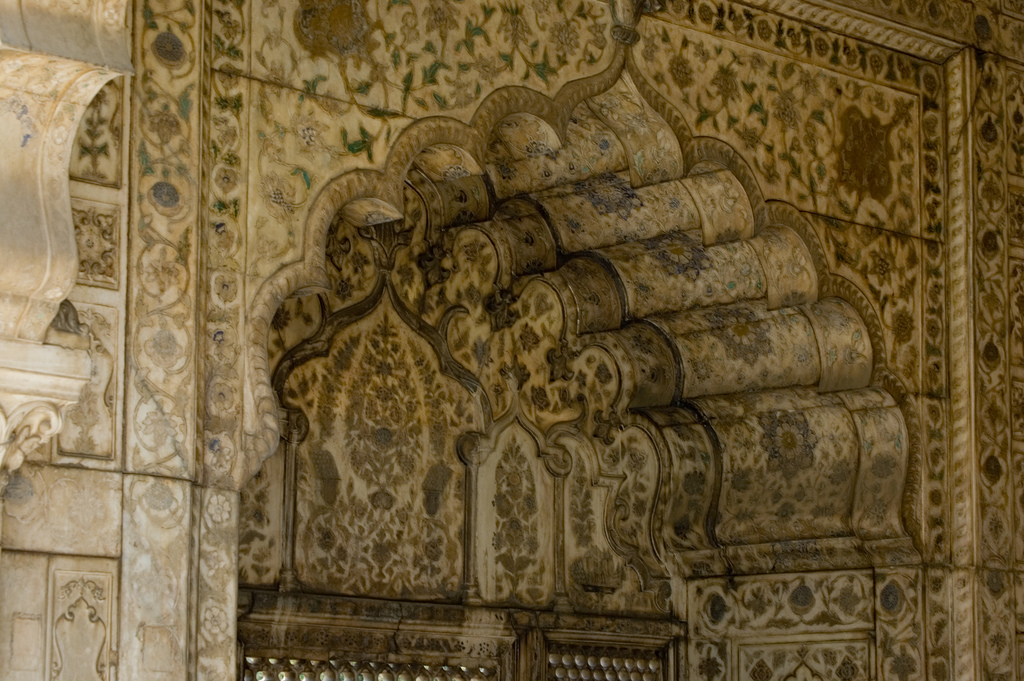
A closer view of the niche above that grilled window
Source: http://www.flickr.com/photos/dankit/138060427/
(downloaded Sept. 2006)
*Another view of the same grilled window*
Source: http://www.flickr.com/photos/mattlogelin/147454524/
(downloaded Sept. 2006)
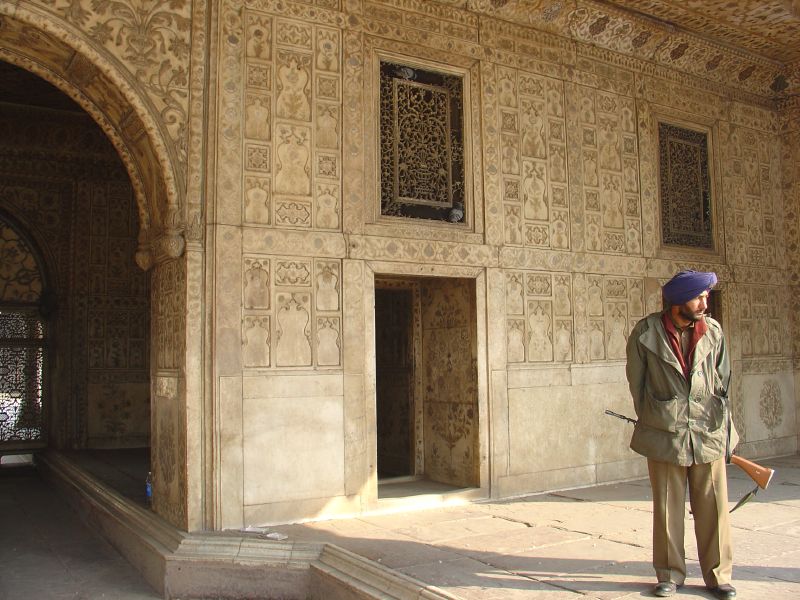
Closely guarded then, the Khas Mahal is still closely guarded today
Source: http://www.flickr.com/photos/xshane/80910314/
(downloaded Sept. 2006)
The Tasbih Khanah, Khwabgah, and Baitak form one building; the former consists of a row of three rooms facing the Diwan Khas; a second row of three rooms behind this is known as the Khwabgah, and the adjoining hall, which is about half the width of the Khwabgah, was indiscriminately called the Baitak or the Toshah Khanah. The three apartments together may be equal in size to the Diwan Khas. There is nothing particular to notice either in the Tasbih Khanah or the Baitak; the Khwabgah, however, deserves more than passing attention. As already stated, it is the name of the three rooms in the centre of the building; the middle room is about 45 feet by 18 feet, those on its east and on its west are about half its size. The three rooms communicate with one another through arched doors in the centre room; the walls were at one time inlaid with precious stones which were pillaged by the attendants of the court and have recently been repaired with great success. In the northern and the southern walls of the centre room there are arched doors covered with marble screens, and under the arches there are inscriptions of historical fame-- the work of Sa'adullah Khan, the Wazir of Shah Jahan. On the outer eastern face of the door of this room there is another inscription, which is also said to be the work of the same author.
On the northern screen of the centre room, there is an embossed symbolical representation of justice; the scales of justice are held over a crescent, in the midst of stars rising out of clouds.
--Carr Stephen, Archaeology and Monumental Remains of Delhi (Author, 1876), pp. 234-35
== Indian Routes index == Indian Routes sitemap == Glossary == FWP's main page ==